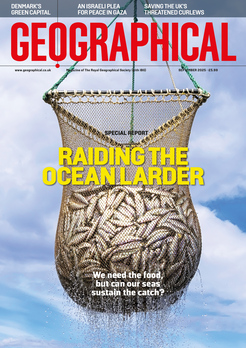
British high street chain, M&S, aims to reduce the methane produced from farting and burping cows by changing their diet
By
Can you imagine a world without cattle? They were first domesticated some 10,500 years ago, and by providing us with milk, food and leather, they have helped us spread across the globe and shaped our landscapes. Today, there are roughly around 1.5 billion cows walking about the Earth, and in some cultures, cows are so important they’re considered sacred, and conflicts have – and continue to be – fought over cows. All things considered cows have been pretty instrumental in the success of humans.
But, there’s a problem with our cattle obsession. They’re not great for the atmosphere of our planet. When they’re not nibbling on grass they’re farting. A lot. And they burp. A lot. It’s hard to believe but they do this even more than the average 14-year-old boy does. In fact, livestock, and in particular cattle, are said to produce almost a third of human-caused methane and 14 per cent of all human-induced climate change emissions.
In an effort to achieve its stated aim of reaching net zero by 2040, major British high street retailer, Marks & Spencer (M&S), which uses dairy products in some of its food products, has vowed to take action against cows farting into its food chain. The methane that cows produce is a natural by-product of the animals’ digestive processes. By making a £1 million investment in a change to the diet of its 40 herds of pasture-grazed milk cows to a diet derived from mineral salts and a by-product of fermented corn, M&S hope to prevent the animals’ digestive enzymes from producing as much methane. By moving to this new feed, M&S hope to remove 11,000 tons of greenhouse gas emissions from the atmosphere annually, and so cut the carbon footprint of the fresh milk they produce by 8.4 per cent.
Other projects announced by M&S to reduce its climate footprint include asking customers to donate unwearable clothes to Oxfam, alongside wearable clothing. According to M&S, these unwearable items will be cleaned and used to support fibre-to-fibre recycling, where fibres are re-used and turned into new material, preventing them from going to landfill. They will also be experimenting with the use of AI data to predict a shop’s optimal heating, ventilation and air conditioning controls in order to reduce energy consumption.
Related articles:




